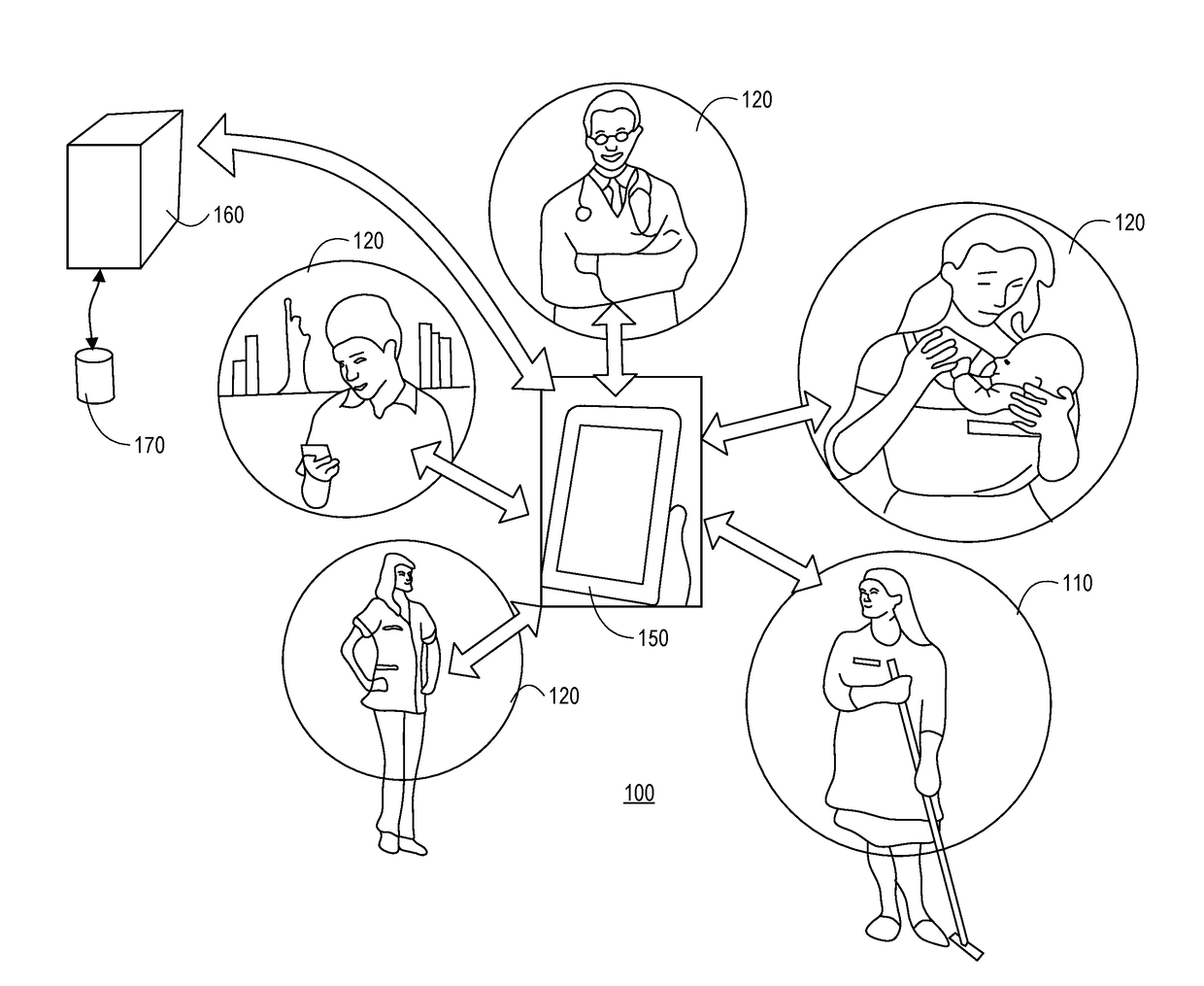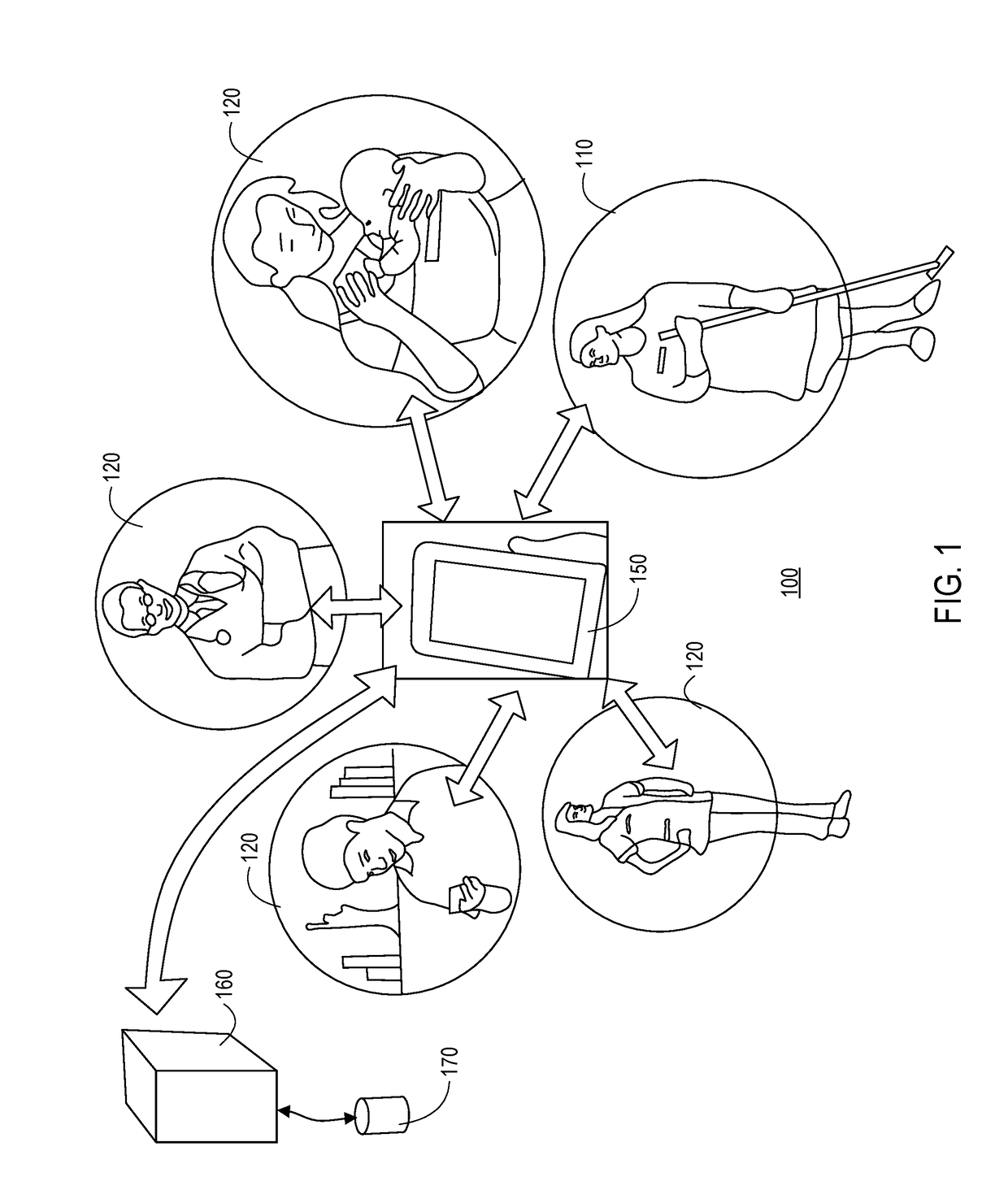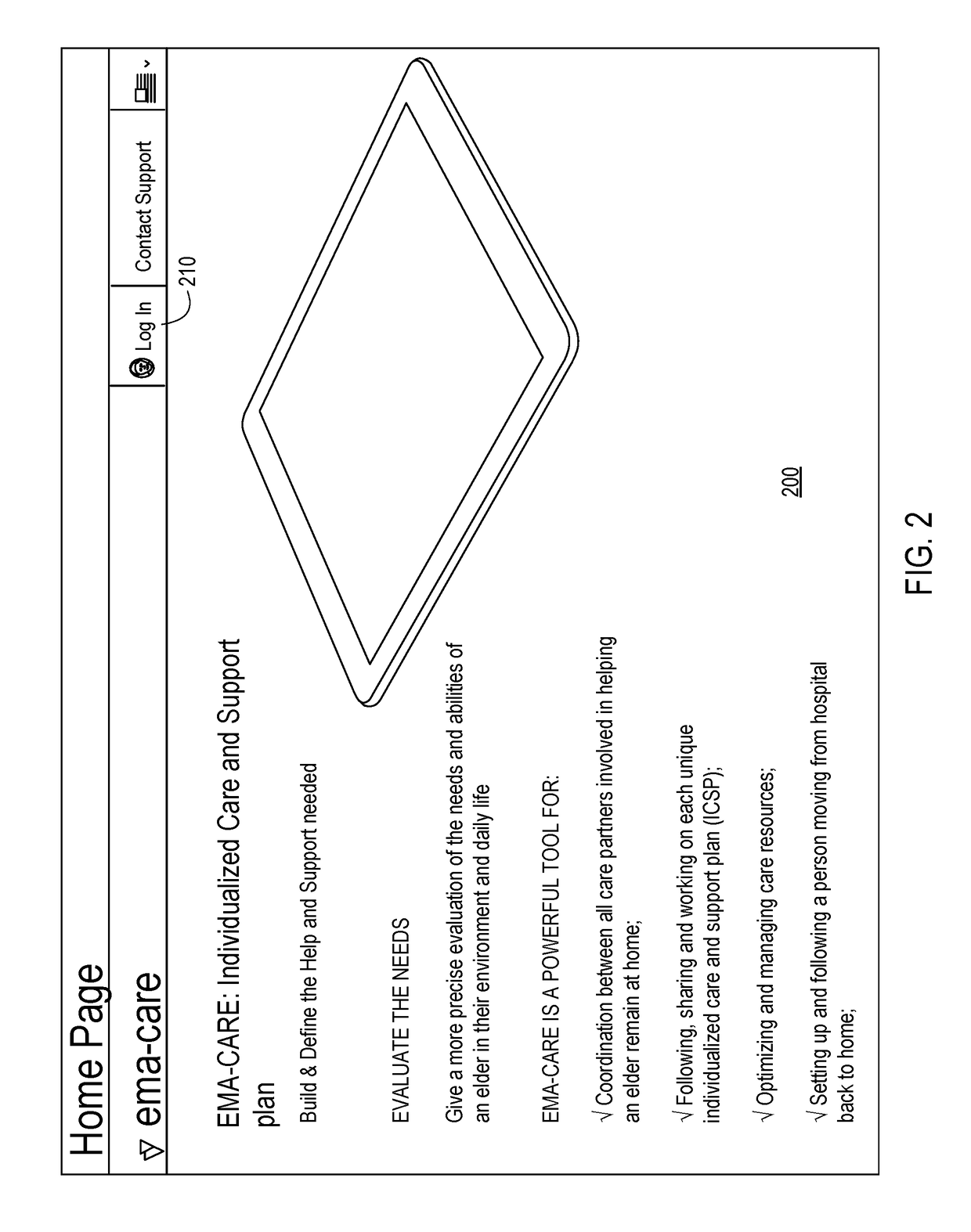Elder Care Assessment and Interactive Case Management System
a case management system and care assessment technology, applied in the field of elder care assessment and interactive case management system, can solve the problems of difficult navigation of a fragmented healthcare system for even the most adept patient, especially difficult to achieve among older adults, and enormous challenges in care coordination at such a complex level
- Summary
- Abstract
- Description
- Claims
- Application Information
AI Technical Summary
Benefits of technology
Problems solved by technology
Method used
Image
Examples
Embodiment Construction
[0077]The present invention relates generally to healthcare management systems and, more particularly, to methods and systems for evaluating and managing care for an individual, typically an older adult, living at home, in assisted living, or in other care settings.
[0078]The focus of the processes and systems described herein are on four key points associated with care recipients: Evaluation, Monitoring, Assistance, and Care. Accordingly, the goals of the processes and systems described herein are to identify the needs and abilities of care recipients, to improve or maintain the care recipient's physical and psychological well-being so they can remain independent, and to improve care coordination for all care partners.
[0079]When used to its full potential, the processes and systems described herein and preferably embodied in an interactive software application contain a wealth of information for each care recipient. The user of the application (typically a care partner) completes a ...
PUM
 Login to View More
Login to View More Abstract
Description
Claims
Application Information
 Login to View More
Login to View More - R&D
- Intellectual Property
- Life Sciences
- Materials
- Tech Scout
- Unparalleled Data Quality
- Higher Quality Content
- 60% Fewer Hallucinations
Browse by: Latest US Patents, China's latest patents, Technical Efficacy Thesaurus, Application Domain, Technology Topic, Popular Technical Reports.
© 2025 PatSnap. All rights reserved.Legal|Privacy policy|Modern Slavery Act Transparency Statement|Sitemap|About US| Contact US: help@patsnap.com



